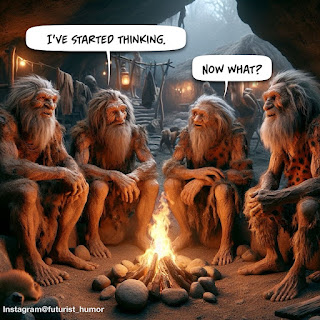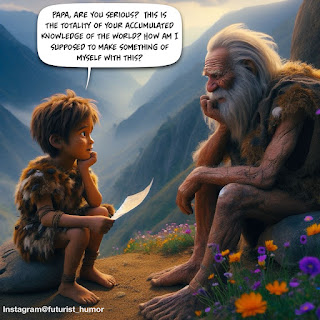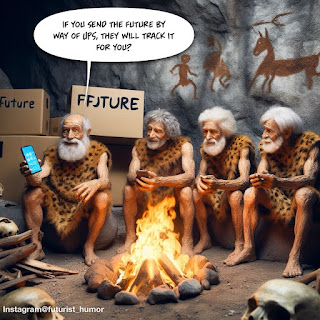Kevin Benedict is a TCS futurist and lecturer focused on the signals and foresight that emerge as society, geopolitics, economies, science, technology, environment, and philosophy converge.
The Hidden Currency of Change: Transformational Energy
How Our Minds Resist the Future
Rule #1. The future will always be tainted by our past, as we will attempt to apply our legacy perspectives, biases, moral frameworks and belief systems there, relevant or not. ~ Kevin Benedict
- Loss Aversion: This tendency involves preferring to avoid losses rather than acquiring equivalent gains. The fear of losing what one already has (such as status, resources, or comfort levels) can be a more potent motivator than the potential benefits of gaining something new.
- Status Quo Bias: Many of us prefer things to remain unchanged because the status quo is familiar and comfortable. Change introduces uncertainty, which can be stressful and anxiety-inducing.
- Confirmation Bias: We tend to favor information that confirms our pre-existing beliefs or values. This bias can close us off to new ideas and lead to selective gathering of evidence, making change more difficult.
- Fear of the Unknown: Change is inherently uncertain. Not being able to predict outcomes can lead to fear or anxiety, causing us to stick with known quantities, even if they are suboptimal.
- Cognitive Dissonance: When new information conflicts with our existing beliefs, it can create discomfort known as cognitive dissonance. We often resist change because it challenges our worldview or identity, leading to discomfort we naturally wish to avoid.
- Habit: Our behavior is largely driven by habits, which are efficient for cognitive processing. Changing habits requires conscious effort and can be mentally taxing, thus we often resist change to maintain cognitive ease.
The Future, Progress and Moral Frameworks
Those who believe in the inevitable progress of man, forget that the twentieth century was the bloodiest, most destructive century in human history. The century's two world wars alone resulted in the deaths of at least 60 million people.
Intelligence Transformation with Dr. Paul J. Bailo
Building a Better Future
Future Catalysts that Just Might Change Us
Future Progress Constrained by Social Media
Catalysts that Shaped Human History
How Beliefs Influence the Future
When the World Changed - Art and AI
Reading the News Like a Futurist with Alex Whittington
AI, Eldercare and Innovation with TCS Expert Ved Sen
Healthcare AI with Oracle Expert Suhas Uliyar
The Evolution of IoT, Digital Twins and AI with Rob Tiffany
The Evolution and Future of Information Dissemination
Ideation Equals Progress: Navigating the Future through Collective Ingenuity
Using Physics to Understand the Future
"While there can be surprise technological and market disruptions, classical Newtonian mechanical physics’ suggestions that trajectories are the flight paths determined by mass positioning, direction, and momentum as a function of time can help us make accurate predictions." ~ Jeffrey A. Sonnenfeld & Steven Tian
As a writer, I appreciate gifts of inspiration. Reading the above quote set my mind off this morning. It is so true! As a futurist we are always studying trends, innovations and developments, and then searching for signals that will inform us about the "trajectories," each of them will follow. Using Newtonian mechanical physics as helpful metaphors to understand directions and how much inertia a trend has, how fast it is changing, and how much resistance it might face are all useful considerations.
I have had the pleasure over the last year to meet with the leadership teams of many large companies around the world to talk about the future. Bringing a list of over 350 fast evolving trends across the domains of science, technology, societal, geopolitical and economic is a good place to start, but these discussions almost always turn quickly toward Newtonian mechanical physics. How much? How fast? When? What direction? How much inertia? What kind of resistance? These are the right questions!
As I covered in an article earlier this week, we can create different buckets of trends, innovations and developments. Some, are incremental innovations, while others are "launchpad" developments that will support entire new ways of thinking and will change the direction of our future.
It's not enough to pocket a list of quickly evolving trends, developments and technologies. One must understand the physics involved, the dependencies for a development to move forward, understand which rung on the historic ladder of progress a development is sitting, and also understand it's potential for scaling. These, of course, are just the beginning, but they are a good place to start.
Mastering the Art of Decision-Making:Navigating Complexity and Speed in Modern Leadership
The Convergence of Human Bias and AI in Shaping Our Future
A Futurist Pondering Biological vs. Digital Learning
Launchpads and Convergences
- Broad Applicability: Technologies that can be applied across a wide range of industries and disciplines.
- Potential for Disruption: Technologies that challenge or revolutionize the existing way of doing things in significant areas (like communication, energy, transportation).
- Scalability: The potential to be scaled up efficiently and economically to serve large populations.
- Foundation for Further Innovation: A technology that serves as a foundation on which other technologies can be built.
- Addressing Fundamental Needs or Problems: Technologies that solve fundamental human problems or needs (like health, safety, communication).
- Interconnectivity: The ability to connect with and enhance existing technologies or infrastructures.
- Economic Viability: The potential for economic sustainability, profitability and with widespread adoption and development.
- 5G/6G
- Sustainable Energy
- Internet of Things
- Artificial Intelligence
- Drones
- Mixed/Extended/Augmented/Virtual Realities
- Blockchain/Distributed Ledger
- Precision Foods - Farming/Fermentations/Lab Grown/Vertical/Plant Based
- Robotics
- Synthetic Biology
- Genetic Engineering
- Genomics
- Precision Medicine
- Nanotech
- Quantum Computing
Launchpad Technologies
- Broad Applicability: Technologies that can be applied across a wide range of industries and disciplines are more likely to become launchpads.
- Potential for Disruption: Technologies that challenge or revolutionize the existing way of doing things in significant areas (like communication, energy, transportation) have launchpad potential.
- Scalability: The potential to be scaled up efficiently and economically to serve large populations.
- Foundation for Further Innovation: If a technology serves as a foundation on which other technologies can be built, it's a strong candidate.
- Addressing Fundamental Needs or Problems: Technologies that solve fundamental human problems or needs (like health, safety, communication) are likely to be foundational.
- Interconnectivity: The ability to connect with and enhance existing technologies or infrastructures.
- Economic Viability: The potential for economic sustainability and profitability can often drive widespread adoption and development.
- Quantum Computing: Leverages principles of quantum mechanics to process information at unprecedented speeds. It could solve complex problems beyond the reach of classical computers, impacting cryptography, material science, and pharmaceuticals.
- CRISPR and Gene Editing: A technology for editing genomes with high precision. It could be revolutionary in healthcare and agriculture, with the potential to cure genetic diseases and improve crop resilience.
- 5G and Advanced Wireless Technologies: The next generation of wireless communication offering higher speed and lower latency. It could enable a more connected world, crucial for IoT, autonomous vehicles, and smart cities.
- Blockchain and Distributed Ledger Technologies: A decentralized digital ledger technology. It has the potential to transform financial transactions, supply chain management, and data security.
- Artificial Intelligence and Advanced Machine Learning: AI encompasses systems that can learn, reason, and make decisions. Applicable across industries, from healthcare diagnostics to autonomous driving and personalized services.
- Renewable Energy Technologies (like Advanced Solar Cells): Technologies harnessing sustainable energy sources. It's key to addressing climate change and ensuring energy security.
- Augmented Reality (AR) and Virtual Reality (VR): Technologies creating immersive digital experiences. Transformative in gaming, training, education, and remote work.
- Nanotechnology: Manipulating matter at an atomic or molecular scale. It promises breakthroughs in materials science, medicine, and electronics.
- Autonomous Vehicles: Vehicles capable of navigating without human input. It has the potential to revolutionize transportation, logistics, and urban design.
- Biotechnology (including Synthetic Biology): Technology based on biology for industrial and other purposes. It could lead to medical breakthroughs, sustainable manufacturing, and new materials.
- Edge Computing: Distributed computing paradigm bringing data storage and computation closer to data sources. Enhances IoT efficiency, supports AI applications, and reduces latency in computing.
- Advanced Battery Technologies: Innovations in energy storage, such as solid-state batteries. Critical for electric vehicles, renewable energy integration, and portable electronics.
- Internet of Things (IoT): Network of interconnected devices collecting and sharing data. Enabling smart homes, healthcare devices, and industrial automation.
Chain of Development
AI in Supply Chain Management with Expert Joe Carson
Are Humans Part of a Larger Superorganism?
Lenses for Time, Distance and Knowledge
The Impact of Compressing Time and Distance
Embedding Our Ethics, Values, Morals, Religions and Philosophies into AI
Interviews with Kevin Benedict
-
The history of human communication is marked by groundbreaking technological innovations that have reshaped societies. Among these, there ar...
-
Ever wondered how AI is shaking up the world of engineering, construction and geology? We're chatting with Joel Carson, the Executive Di...
-
In this interview, we sit down with Gartner’s Deepak Seth to explore the transformative power of Artificial Intelligence (AI) and its far-re...




















